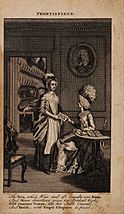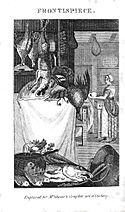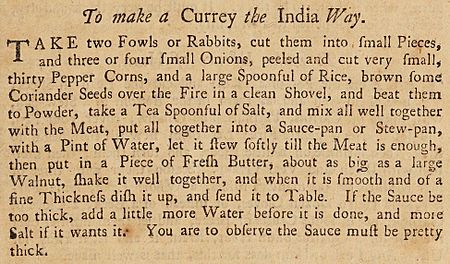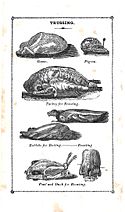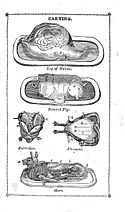Hannah Glasse facts for kids
Quick facts for kids
Hannah Glasse
|
|
|---|---|

Glasse's signature at the top of the first chapter of her book, The Art of Cookery Made Plain and Easy, 6th Edition, 1758
|
|
| Born | Hannah Allgood March 1708 London, England |
| Died | 1 September 1770 (aged 62) London, England |
| Occupation | Cookery writer, dressmaker |
| Notable works | The Art of Cookery Made Plain and Easy (1747) |
| Spouse |
John Glasse
(m. 1724–1747) |
| Children | 10 or 11 |
Hannah Glasse (née Allgood; March 1708 – 1 September 1770) was a famous English writer of cookery books in the 1700s. Her first book, The Art of Cookery Made Plain and Easy, came out in 1747. It quickly became the most popular recipe book of that century.
Her book was so popular that it was printed again in its first year. It appeared in 20 different versions during the 1700s and was still being printed in the 1800s. Hannah Glasse later wrote two other books: The Servants' Directory (1760) and The Compleat Confectioner (probably 1760). But these books were not as successful as her first one.
Hannah Glasse was born in London. Her father was a landowner from Northumberland. When she was 16, she secretly married John Glasse, an Irish soldier who was 30 years old. They lived in Essex and often had money problems. To earn money, Hannah decided to write her cookery book.
She copied many recipes from other cookery books. About one-third of her recipes had been printed before. However, she also created new recipes. These included the first known curry recipe written in English. She also had three recipes for pilau, an early mention of vanilla in English cooking, and the first time jelly was used in trifle. She also had an early recipe for ice cream. Hannah Glasse was also the first person to use the name "Yorkshire pudding" in a book.
Later, Glasse became a dressmaker in Covent Garden. Even Princess Augusta, the Princess of Wales, was one of her customers. But Hannah got into a lot of debt. She was put in prison because she couldn't pay her debts. She then had to sell the rights to her famous book, The Art of Cookery. We don't know much about Hannah Glasse's later life. A historian named Madeleine Hope Dodds found out who she was in 1938. Other writers copied Hannah Glasse's work, and illegal copies of her book were common, especially in the United States. Many famous English cooks in the 1900s admired her book. These include Elizabeth David, Fanny Cradock, and Clarissa Dickson Wright.
Contents
About Hannah Glasse
Her Early Life
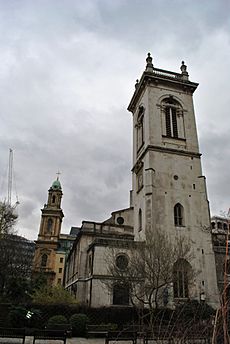
Hannah Glasse was born Hannah Allgood in London in March 1708. Her father, Isaac Allgood, owned land and coal mines. He was from a well-known family in Nunwick Hall, Hexham, Northumberland. Hannah was christened on March 24, 1708, at St Andrews, Holborn, London.
Hannah's father took her and her mother to live in Hexham. Hannah grew up with his other children. But her mother later left Hexham. By 1713, her parents were living together again in London. Her father later gave all his property to Hannah's mother. When he realized this was a mistake, they separated. Hannah's family worked to get the property back, which they did in 1740. This gave Hannah a yearly income. Hannah did not get along well with her mother.
In 1724, Hannah's father got sick. Hannah went to live with her grandmother. Her grandmother did not let her go to social events. But Hannah started a secret relationship with John Glasse. He was 30 years old and a soldier. On August 4, 1724, they got married secretly. Her family found out a month later. Hannah moved in with her husband in Piccadilly. Her family was angry at first, but they soon became friendly again. Hannah wrote to her grandmother, saying she was sorry for the secrecy but not for getting married.
By 1728, the Glasses lived in New Hall, Broomfield, Essex. John Glasse probably worked there as a manager. They had their first child there. In November 1734, they moved back to London. They lived there for four years before moving to Greville Street. Over the years, Hannah gave birth to ten children. Five of them died young. Hannah thought education was important. She sent her daughters to good local schools. She sent her sons to Eton and Westminster.
The family always had money problems. In 1744, Hannah tried to sell a medicine called Daffy's Elixir. But this plan did not work out. So, she decided to write a cookery book.
Her Famous Cookery Book
In January 1746, Hannah Glasse wrote, "My book goes on very well and everybody is pleased with it." The Art of Cookery Made Plain and Easy was printed the next year. It was sold for 5 shillings if bound, or 3 shillings if simply stitched. People who paid for the book before it was printed were listed inside. The first edition had 202 such names.
On the title page, Glasse wrote that her book was better than any other like it. In her introduction, she said she was writing for household staff. She apologized if her writing style was not fancy. She wanted to teach "the lower Sort" in a simple way.
Glasse copied a lot from other books. Out of 972 recipes in the first edition, 342 were copied or changed from other works. This was common then because recipes were not protected by copyright laws. For example, a whole chapter on cream was taken from Eliza Smith's 1727 book.
A second edition of The Art of Cookery Made Plain and Easy came out in the same year. Nine more versions were printed by 1765. The first few editions did not say who wrote the book, only "By a Lady". Hannah Glasse's name appeared on the fourth edition in 1751. Because her name was not on it, some people wrongly thought it was written by a man named John Hill.
Later Years and Other Books
Hannah's husband, John Glasse, died in 1747. That same year, Hannah started a business as a dressmaker in Covent Garden. She worked with her oldest daughter, Margaret. The fourth edition of her book had an advertisement for her shop. It said she made clothes for Princess Augusta, the Princess of Wales. Her half-brother Lancelot visited her. He wrote that she had many important visitors, including the Prince and Princess of Wales.
But Hannah's business was not successful. She borrowed a lot of money and went bankrupt in May 1754. She owed £10,000. To pay her debts, she had to sell the copyright of The Art of Cookery Made Plain and Easy. This meant she no longer owned the rights to her own book. She was released from bankruptcy in January 1755.
In 1754, another cookery book was published by Ann Cook. This book strongly criticized Hannah Glasse and her book. Historians believe Ann Cook had a disagreement with Hannah's half-brother, Lancelot Allgood. She used her book to get back at him.
Hannah Glasse continued to live in her home until 1757. But her money problems continued. She was put in Marshalsea prison in June 1757 because of her debts. A month later, she was moved to Fleet Prison. By December, she was released. She then registered shares in The Servants' Directory. This book was about how to manage a household. It was published in 1760 but did not sell well.
Hannah also wrote The Compleat Confectioner. This book was probably published in 1760. Like her first book, she copied parts of it from other writers. This book taught how to make sweets, cakes, and ice cream. It included how to boil sugar, make custards, and preserve foods.
We don't have many records about Hannah Glasse's last ten years. In 1770, a newspaper announced her death on September 1.
Her Books and Ideas
The Art of Cookery Made Plain and Easy mostly has English recipes. It aimed to provide good, affordable food. The TV cook Clarissa Dickson Wright said it was a great summary of English cooking for wealthy homes in the mid-1700s. Hannah Glasse noticed that young ladies were no longer taught how to make sweets and fancy desserts. Many recipes in The Compleat Confectioner moved away from old-style banquet dishes. They focused on new desserts popular in the 1700s and 1800s.
In The Art of Cookery, Glasse showed a modern way of cooking. She focused more on savory dishes, which were influenced by French cooking. She moved away from the older, sweet dishes that were popular in the 1600s. In The Compleat Confectioner, she wrote that every young lady should know how to make sweets and set up a dessert. She said that in the past, it was important for a young lady to know these things, even if it was just to tell her servants what to do.
Hannah Glasse often criticized French cooking. In her introduction, she wrote: "A Frenchman in his own country will dress a fine dinner of twenty dishes... for the expense he will put an English lord to for dressing one dish." She also said, "I have heard of a cook that used six pounds of butter to fry twelve eggs... but then it would not be French." She thought it was foolish that people would rather be tricked by a French cook than support a good English cook.
Even though she seemed to dislike French cooking, she included French recipes. She had a chapter with eight detailed French recipes. She advised, "Read this chapter and you will find how expensive a French cook's sauce is." She often changed French recipes to make them more English. With each new printing of her book, more non-English recipes were added. These included recipes from German, Dutch, Indian, Italian, West Indian, and American cooking.
The first edition of her book had the first known English-written curry recipe. It also had three recipes for pilau. Later versions added more curry recipes and an Indian pickle. Most of her recipes did not give exact measurements. But she did give some helpful tips, like "about as much thyme as will lie on a sixpence".
Glasse's book included recipes for "Welch rabbit" (now called Welsh rarebit), "English Rabbit," and "Scotch Rabbit." It also had a chapter for "Captains of the Sea." This chapter had recipes for curing and pickling food. The book also had recipes for "A Certain Cure for the Bite of a Mad Dog" and a "Receipt [recipe] against the Plague." The 1756 edition mentioned vanilla in English cooking for the first time. It also had the first recorded use of jelly in trifle. Later printings added hamburgers ("hamburgh sausages"), piccalilli ("Paco-Lilla"), and an early recipe for ice cream. Hannah Glasse was the first to use the term "Yorkshire pudding" in print.
The historian Anne Willan said that The Art of Cookery Made Plain and Easy was not easy to use. This was because early editions did not have an alphabetical index. The recipes were also not always organized well. However, the early versions had a very long table of contents, which listed topics over 22 pages.
Hannah Glasse was ahead of her time in some ways. She gave a recipe for "pocket soop" years before stock cubes were invented. She also advised cooks to seal pickles and jams tightly to keep them fresh. This was over a century before Louis Pasteur studied how germs work. She stressed the importance of cleanliness in the kitchen. She said dirty equipment would spoil the taste or make people sick. Her advice showed the growing trend of better hygiene in England.
Unlike many other cookery writers, Glasse did not include medical advice in her main book. However, chapter ten of The Art of Cookery was called "Directions for the sick." It had recipes for broth and other dishes for sick people. Glasse also did not give instructions on how to run a household. She wrote that every mistress should know what to do in her own home.
Glasse wrote The Art of Cookery for people living in cities. The Servants' Directory was written only for female household staff. It explained each job fully.
Hannah Glasse's Legacy
For many years, people did not know much about Hannah Glasse. In 1938, Madeleine Hope Dodds found out about her connection to the Allgood family.
The Art of Cookery was the most popular cookery book of the 1700s. It was reprinted many times after Glasse died. It had over twenty reprints in a hundred years. The last edition was printed well into the 1800s. Other writers copied Glasse's work a lot. This included Isabella Beeton's famous book Mrs Beeton's Book of Household Management (1861). The words "plain and easy" from her title were also used by many others.
Copies of The Art of Cookery were taken to America by travelers. It became one of the most popular cookery books in colonial America. It was printed in the US in 1805. It's even possible that Benjamin Franklin had some of her recipes translated into French. Copies of The Servants' Directory were also copied illegally in America.
The famous saying "First catch your hare" is often wrongly said to be from Hannah Glasse. The Oxford English Dictionary says this saying is much newer. Glasse's recipe for roast hare actually starts with "Take your hare when it be cas'd." This means to take a hare that has already been skinned. This saying is one of about 400 of her quotes used in the Oxford English Dictionary.
In 1983, a company published a copy of the 1747 edition of The Art of Cookery. It was called First Catch Your Hare. It had essays by historians and a glossary. It has been printed again many times. A historian named Jennifer Stead studied each recipe. She found that Glasse had copied 342 recipes from other writers.
In 2006, Hannah Glasse was the subject of a BBC TV show. The TV cook Clarissa Dickson Wright presented it. Dickson Wright called Glasse the "mother of the modern dinner party" and "the first domestic goddess." On March 28, 2018, Google Doodle celebrated Hannah Glasse's 310th birthday.
Many modern cooks and food writers admire Hannah Glasse. The 1900s cookery writer Elizabeth David said Glasse wrote from her own experience. The TV cook Fanny Cradock praised Glasse in 1971. She found Glasse's writing easy to follow. She thought Glasse was an honest cook who had tried most of her recipes. The food writer Jane Grigson also admired Glasse's work. She included many of Glasse's recipes in her 1974 book. Clarissa Dickson Wright said she felt a strong connection to Hannah Glasse. She admired Glasse's simple and honest way of cooking. For Dickson Wright, Hannah Glasse is "one of the greats of English food history."
See also
 In Spanish: Hannah Glasse para niños
In Spanish: Hannah Glasse para niños


